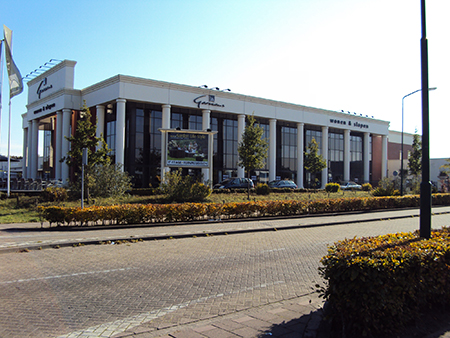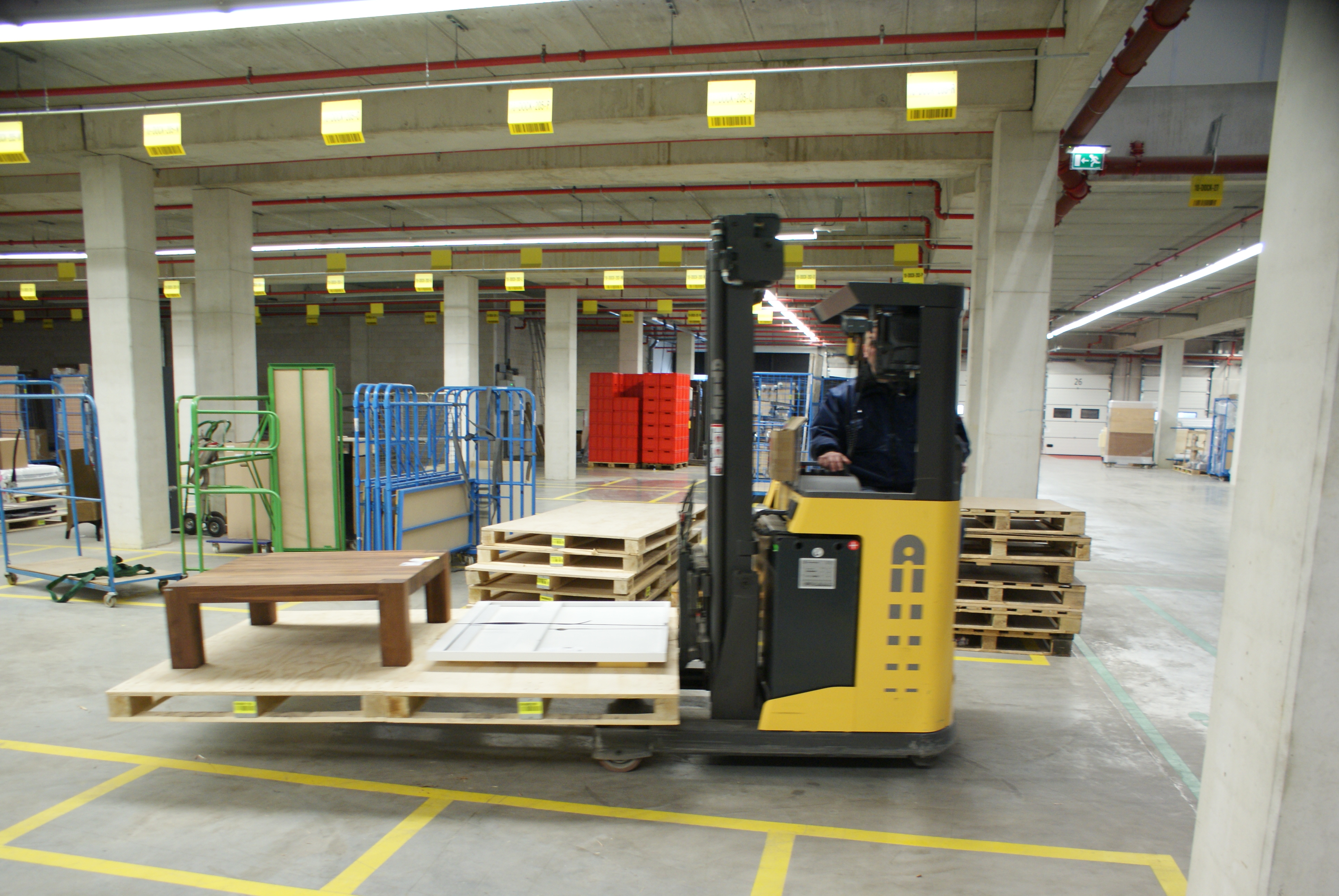

 Furniture retailer Goossens Wonen & Slapen is aiming to optimize its logistics processes at its new distribution centre. In so doing, the emphasis has been placed on improving storage methods and increasing storage capacity.
Furniture retailer Goossens Wonen & Slapen is aiming to optimize its logistics processes at its new distribution centre. In so doing, the emphasis has been placed on improving storage methods and increasing storage capacity.
Use has been made of a high-rise rack system. A total of 105 loading bays are virtually in constant use along three sides of this huge distribution centre that is used for furniture storage/distribution purposes. This set-up minimizes cross-flows between goods storage areas and dispatch/delivery areas. The building is enormous measuring 195 × 158 m (640 × 518 ft). Offices and service centre are located on the first floor. The distribution centre – covering an area of 59,000 m² (635,000 sq ft), i.e. twelve football pitches, and reaching a height of 20 m (66 ft) – is by far the biggest and tallest building on the Doornhoek industrial estate in Veghel. According to Goossens, its new distribution centre is one of the largest furniture warehouses in Europe. Next door, there is even a plot of undeveloped land available for future expansion. The high-rise rack storage warehouse situated in the inner core covers an area equivalent to two football pitches with enough space for 54,000 pallet locations.
DECISION-MAKING PROCESS
Warehouse manager Albert de Vlieg (42) manages sixty warehouse staff from his office on the first floor, ‘Before we started construction, we took a close look at several other furniture warehouses to see how they had organized their goods flows. Unfortunately, this wasn’t as innovative as we had hoped. So, together with the project group, we took a look at other sectors – for example, the food sector – where things are far more dynamic.’ The extent to which processes can be optimized and automated is always a pertinent question when constructing new premises. Initially, the decision was made to construct a fully automated, narrow-aisle warehouse with unmanned high-lift trucks and roller conveyors to replace remaining internal transportation systems. ‘We even asked the supplier of our internal transportation systems to perform a software simulation (Atlet Logistics Analyser) for a fictitious automated warehouse, but this solution proved to be impracticable in our particular situation. Most of our products are items of furniture that come in all shapes and sizes. These were too diverse and too bulky to process in a fully automated environment using powered roller conveyors.’
LAYOUT
The warehouse layout ultimately turned out to be more conventional, but more affordable and realistic, using manned high-lift trucks and reach trucks that complement one another perfectly using a narrow-aisle warehouse layout. The narrow aisles are the exclusive domain of the induction-powered high-lift trucks. The reach trucks have been fitted with hydraulic forks that drop off palletized items of furniture at the head of the racks (pick & drop) where the high-lift trucks pick them up and stack them in the narrow-aisle warehouse. There are three pick & drop locations that are managed from the WMS. Using this layout, they do not impede one another and the flow of goods is streamlined. Recesses have been made in the floor using steel beams that ensure that pallets are always placed in exactly the same position. This simplifies setting the pallets down and picking them up again. In peak periods, reach trucks are assisted by electric pallet trucks on the routes to the dispatch zones.
HYDRAULIC LIFT TRUCK FORKS
Hydraulic Lift Truck Forks’The pallets we use are quite different to regular pallets, which is why we use KOOI-ReachForks®. Our furniture doesn’t fit on a standard Euro or block pallet – items are too long, so we use specially designed pallets. Hydraulic forks can be extended easily to the correct pallet dimensions so that they always provide enough support beneath the pallet. Because of the diversity of pallet dimensions, we opted for hydraulic forks instead of manually extendible forks. In our case, it would take far too much time extending and retracting the forks manually. Standard, fixed-length, long forks weren’t an option either, as these protrude too far beneath short pallets and would cause damage,’ explains Albert de Vlieg.
Source: http://www.logistiek.nl/goossens, Martin Althoff














